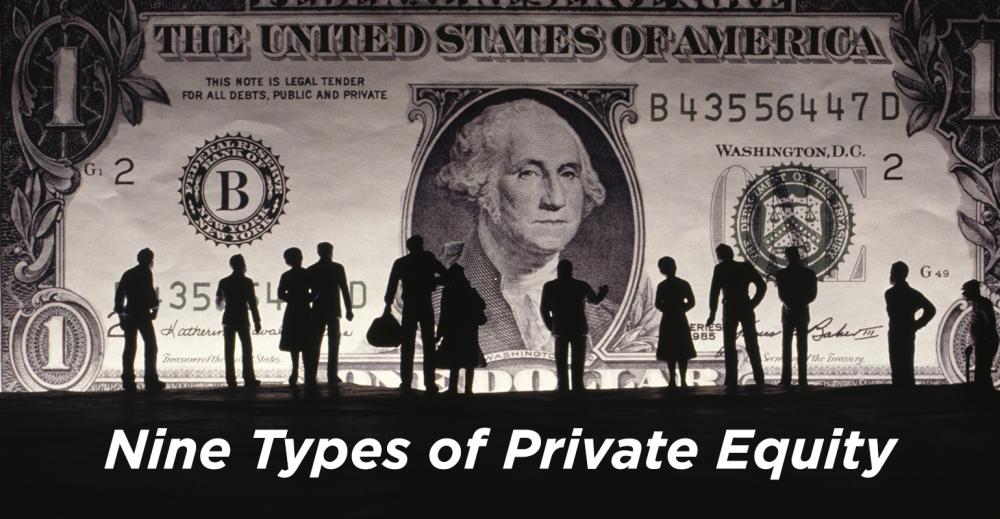1 10
1 10
ADVERTISEMENT
Dollar Silhouette
Paul Katz/Photodisc/Thinkstock
You’re likely familiar with the basics of private equity investing: PE funds invest in private companies and other assets with the aim of later selling their stakes at a profit, typically after five to seven years. The term “private equity” encompasses a wide variety of fund strategies with various objectives. Some funds invest seed capital in promising start-ups, while others try to turn around the fortunes of struggling industrial giants.
By introducing your qualified clients to private equity, you're potentially offering them access to a broad range of new opportunities. There’s a big world beyond the S&P 500—27 million firms in the U.S., in fact, and fewer than 1 percent of them are publicly traded. Private equity funds allow your clients to participate in the success of these companies by investing beyond the public markets.
Here’s a guide to the nine types of private equity funds.
1. Leveraged Buyout
A leveraged buyout (LBO) fund combines investor funds with borrowed money to acquire companies and improve their profitability. The financial leverage can allow the company to acquire larger companies than it would otherwise be able to afford, meaning larger returns if the investments pay off. The private equity fund usually takes a majority stake in the company or buys it outright, allowing it to control the firm’s strategy and direction.
2. Venture Capital
Venture capital funds invest in start-ups and early-stage companies with high growth prospects. Unlike leveraged buyout funds, VC funds typically take only a minority stake, leaving control in the hands of the company management. It’s a riskier strategy because the companies often have little or no track record, but it can deliver spectacular rewards. Sequoia Capital’s $60 million investment in WhatsApp, for example, became worth about $3 billion when the company was acquired by Facebook in 2014.
3. Growth Capital
Growth capital is similar to venture capital but targets more mature companies. As with VC, the private equity fund provides a company with the cash to fuel growth, and takes a minority stake in return. It’s less speculative than venture capital, because the firms have a longer history and are often already profitable, but the successes are not quite as dramatic as a WhatsApp.
4. Real Estate
These funds invest in property and take a number of different strategies. Some funds are relatively conservative, investing in lower-risk rental properties with stable, predictable cash flows. Others invest in land or more speculative development deals, offering greater potential for returns but also greater risk.
5. Infrastructure
Infrastructure funds invest in utilities and transportation hubs like toll roads, airports, bridges, electricity and gas networks and hospitals. A popular area recently has been renewable energy, with funds investing in everything from solar power plants to offshore wind farms.
6. Fund of Funds
In this model, the fund doesn’t invest directly in companies or assets, but instead buys into a portfolio of other private equity funds. This allows investors to achieve the benefits of greater diversification and access funds they might not otherwise have been able to invest in. These funds of funds are managed by professional investors who charge a fee for their manager selection.
7. Mezzanine Capital
Just as the mezzanine floor in a building is halfway between one floor and another, so mezzanine capital is halfway between debt and equity. It can take the form of subordinated notes—debt that is less secure than other loans, and so receives higher interest rates. Or the investment can be preferred stock—a form of equity that has a higher claim on company assets than common stock. Mezzanine funds specialize in these hybrid forms of financing, aiming to achieve higher returns than debt and lower risk than equity.
8. Distressed PE
Sometimes also called “special situations,” distressed PE funds specialize in lending to or investing in companies in serious financial difficulty. Because of the “distressed” state of the companies, the funds can buy shares very cheaply, and the aim is for the company to be restructured and return to financial health, yielding a profit for the fund. There are also hedge funds that are distressed investors, so the lines can blur between hedge funds and private equity when it comes to this style of investing.
9. Secondaries
As we mentioned earlier, it is possible to sell your investment commitment in a fund. Dedicated “secondaries” funds exist to buy those commitments and turn a profit on them. These funds also sometimes buy companies or assets from the portfolio of another private equity fund.

